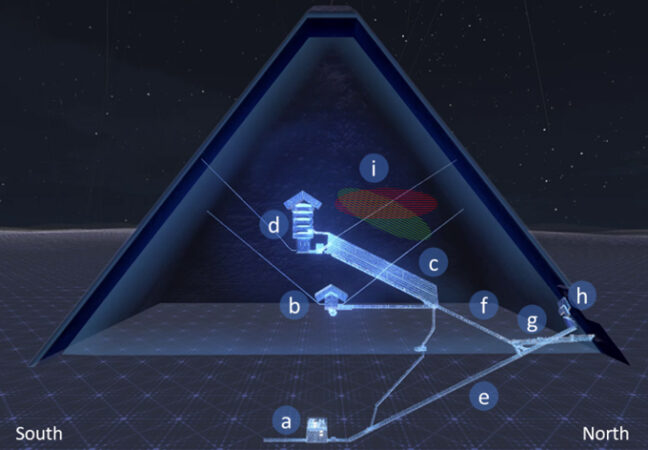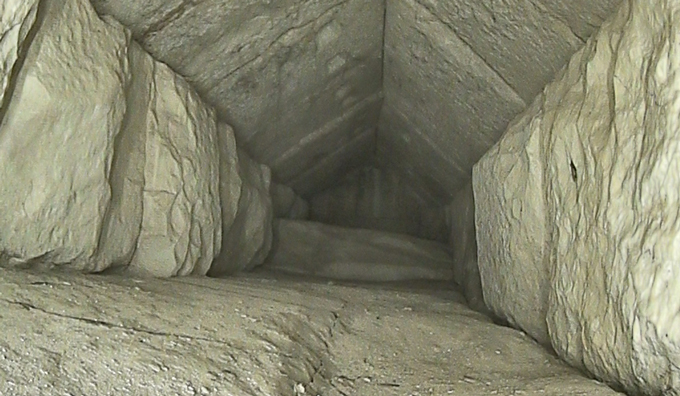Entry Title
A nebulous void in Egypt’s Great Pyramid of Giza has been unveiled thanks to strange subatomic particles called muons.
Scientists first identified the void in 2016 using muons, heavy relatives of electrons that can penetrate through solid materials. Thought to be a corridor-shaped hole, the void was located near a chevron-shaped structure visible on the pyramid’s north face. Further muon measurements revealed new details of the void’s size and shape, scientists from the ScanPyramids team report March 2 in Nature Communications.

The new muon measurements indicate that the void is a 9-meter-long corridor about 2 meters wide by 2 meters tall, close to the pyramid’s north face. ScanPyramids researchers made additional measurements with ground-penetrating radar and ultrasonic testing, they reported March 2 in NDT & E International. The detailed measurements allowed the scientists to use an endoscope to take images inside the chamber, the team announced. The images reveal a corridor with a vaulted ceiling, presumably one that was hasn’t been seen by humans since the pyramid was built more than 4,500 years ago. The corridor’s purpose is still unclear.

Muons are created when high-energy particles from space called cosmic rays crash into the Earth’s atmosphere. Muons are partially absorbed as they rain down onto structures such as the pyramids. Using detectors placed inside the pyramid, scientists from ScanPyramids zeroed in on regions where more muons made it through, indicating they’d traversed less material, which let them map out the location of the void.
Scientists also recently used muons to probe an ancient Chinese wall (SN: 1/30/23), a nuclear reactor and various volcanoes (SN: 4/22/22).
from Science News //https://ift.tt/SYlGbfm
via
Comments
Post a Comment